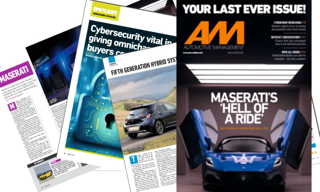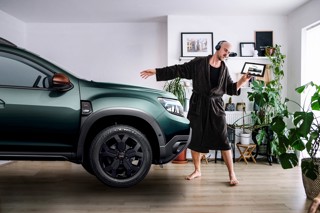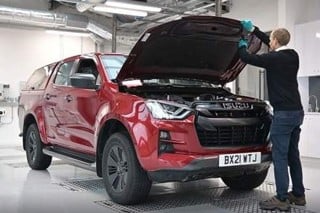Automotive retailers that are investing in digital services to offer a seamless customer journey online and in the showroom are reporting higher sales volumes, according to Auto Trader.
Auto Trader has put together a new report focussing on case studies with groups like JCT600, Luscombe Motors, Peter Vardy and Humphries and Parks.
The new report, Digital Journeys, Physical Retailing, includes consumer research of over 3,000 car buyers and 227 automotive retailers (representing 1,800 franchise and independent locations).
www.autotraderdigitalretailingreport.co.uk
These retail case studies were conducted in partnership with the National Franchised Dealers Association (NFDA) and the ICDP.
In-showroom experience still key
The report reveals that while most people are either already completing some of the necessary car buying ‘jobs’ online or have stated a desire to complete them digitally, they still want and enjoy the in-person experience only a retailer can offer.
For example, while over three quarters (77%) of surveyed consumers said that they had already viewed the real price online or would like to during their next car purchase, nearly a quarter (23%) said they’d prefer to do that job in person.
The report highlights a similar ratio for many of the earlier and more admin heavy ‘jobs’, including booking a test drive (70% / 30%), paying a deposit (61% / 39%), deciding on finance (60% / 40%), negotiating a deal (55% / 45%) and even completing a finance agreement (54% / 47%).
However, with later, more tangible jobs, the ratio leans more towards the physical experience, such as inspecting the car (49% / 51%), which further highlights the important role of the retailer.
This desire for an omnichannel journey, which combines both the digital and physical experience of car buying, is further highlighted by the fact that in an Auto Trader study, 94% of car buyers say they research online as part of their car buying journey, while 91% also say they visit a dealership.
In 2019, 32% of consumers arrived at a forecourt ready to purchase.
Today, due to the growing availability of digital services and the ability to complete more of these jobs online, this has risen to more than half (53%).
In just a few years, the number of people arriving at a dealership ready to buy has increased by two thirds (66%).
This creates opportunities for efficiency gains for retailers who can facilitate this through digital journeys with a seamless transition to a forecourt experience.
Retailers are investing in digital
The retailer study revealed that nine out of 10 believe they’re responding to this growing demand for an omnichannel experience by offering a range of digital services, particularly those that help in the early car buying stages.
The most common being: book a test drive (85%), search available stock across all sites (81%), generate finance quotes (81%), complete finance application (78%), and video chat (77%).
Critically, the survey found that people are engaging with these services in significant numbers, especially those that support earlier-stage jobs.
Nearly three quarters (72%) of retailers enabling consumers to search available stock across all sites are seeing at least one in four of their customers using it, while 49% are seeing the same proportion of their customers booking a test drive online.
Some of the more complicated and time-consuming jobs are also being completed digitally, such as generating finance quotes (48%) and applications (29%).
This engagement is already resulting in perceived benefits.
Those that are offering more digital services (i.e. over half of those tested in this research) are 56% more likely to say they’re improving the customer experience than those that have implemented fewer (less than a quarter), while 28% are more likely to say they’re broadening their appeal beyond their local market.
They’re also twice (102%) as likely to say they’re saving time on admin.
Claire Rogan, director of digital development at Peter Vardy, said: “I think omnichannel is crucial to the future success of our business and a huge efficiency driver.
“Your digital forecourt is open 24/7, so the more people we can help qualify themselves online the better; its time saved for us and for the guest.
“Ultimately, we want to make it easier for guests to deal with us however they want both online and offline, wherever they are in the journey.”
Andy Bateman, director of customer experience, JCT600, went as far as saying that if customers can’t do the things in the order they want, at a time they want, automotive retailers face becoming “irrelevant”.
He said: “You’re not even going to be an option, are you?”
The full potential of omnichannel
While adoption of online tools is high, Auto Trader said many retailers may still be missing out on the full potential of digital retailing, as a significantly lower percentage of businesses have implemented the core operational changes required to support a truly omnichannel experience.
Indeed, retailers said they’d implemented less than a third (27%) of potential changes to their business compared to two thirds (66%) of potential digital services.
Of those that had implemented operational changes, they primarily relate to process or services, such as introducing unaccompanied test drives (56%), offering a no quibble’ returns policy (35%) and changing sales staff bonus system (33%).
Interestingly, those that are delivering the highest value are the addition of new roles which improve both the consumer experience and business performance, such as introducing dedicated customer service roles (94%), as well as IT roles (91%), and data analytics roles (95%).
This is despite only a fifth or fewer of those surveyed saying they’d introduced specific new staff position, which highlights the huge opportunity for retailers.
However, the retailers who are seeing the greatest return in their digital investment are those that say they’ve implemented a higher combination of digital services along with operational changes.
Indeed, they were 38% more likely to agree they were selling more cars per salesperson than those who had implemented fewer of those changes, while 16% were more likely to agree it was helping their business become more efficient.
Ian Plummer, Auto Trader’s commercial director, said: “Retailers can unlock greater reach with the digital products that they’ve embedded and can also yield greater benefits to their business in terms of efficiency.
“Fundamentally, however, it’s the hybrid process, which not only enables the digital journey for consumers, but also offers the physical experience that only a retailer can provide that has the greatest potential.
"Bringing the two together in a blended and consistent way is good for the car buyer, but it’s also vital for the retailer, putting them in the best possible position to benefit from changing consumer needs, and to build their business for future success.”
Sue Robinson, chief executive of the NFDA, added: “The digital retailing research report confirms that retailers are adapting well to digitisation and are beginning to unlock the potential of an omnichannel approach to retail.
“It is positive to see the data reflecting on the high levels of commitment and investment that some retailers have begun to put into operational changes to facilitate this transition over the years and these changes ensure customers receive the highest levels of customer service and contributes to the smooth running of a blended sales model.”




















Login to comment
Comments
No comments have been made yet.